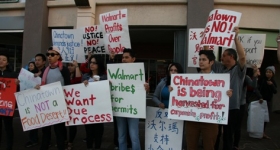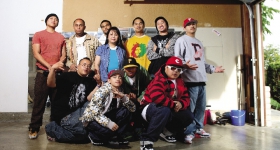According to the Tule Lake Committee:
"During World War II, 120,000 people of Japanese ancestry were incarcerated in ten War Relocation camps used to carry out the government’s system of exclusion and detention mandated by Executive Order 9066. Tule Lake was the largest and most controversial. In 1943, Tule Lake became a high-security Segregation Center imprisoning 12,000 Japanese- Americans deemed “potential enemies” of the United States based on their response to the infamous and confusing “loyalty questionnaire” intended to distinguish those of Japanese ancestry (most of them US citizens) into the categories of "loyal" or "disloyal".
The Tule Lake Committee will focus the 2008 Pilgrimage on stories about “The Segregation Center,” a little-known part of Tule Lake's history.
These stories include:
-
what happened to those that were segregated
-
the pro-Japan sentiments that arose from the injustice and harsh conditions under segregation
-
the complex reasons that drove the large majority of adult American citizens at Tule Lake to renounce their U.S. citizenship.
What can we learn from these stories of the past in order to protect the civil liberties and civil rights of all of our communities today?
The Tule Lake Pilgrimage is a four-day journey to the heart of the former Tule Lake Segregation Center in the Northern California town of Newell. On the bus ride to the California-Oregon border, participants watch videos to learn more about the history of Tule Lake, meet their fellow pilgrims -- former internees, family members, students, and activists – and begin building a pilgrimage community."
What can we learn about this largely unknown history to inform what's going on today?
This annual journey is now in its 16th year.
A similar pilgrimage to Manzanar is the subject of Tad Nakamura's short documentary, "Pilgrimage," which featured at the Sundance this year and is now on DVD.
Also, in another documentary, "Cats of Mirikitani" subject Jimmy Mirikitani was interned at Tule Lake and made his pilgrimage a few years ago, as seen in the documentary.
"People from all walks of life have attended in the past," including Japanese Americans young and elder, people of color and activists, according to the committee.
It's especially crucial now to make the pilgrimage and hear from some of the elders because few of the internees are still around to tell their stories, and the pilgrimage centers around hearing from some of them firsthand.
Though several sites have been preserved as a National Park, it sounds like the bill to make Tule Lake a National Park is stuck in Congress.
The 4-day event costs money, but scholarships are also available. For more information, brochures and registration forms, visit www.tulelake.org. Also, there's a Facebook group you can join here.










Comments